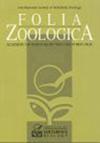规定焚烧对塞伦盖蒂国家公园啮齿动物群落生态的影响
Q2 Agricultural and Biological Sciences
引用次数: 5
摘要
摘要在坦桑尼亚塞伦盖蒂国家公园进行了规定焚烧对啮齿动物群落生态的影响研究。这项研究的目的是产生关于啮齿动物群落变化的生态学知识,当公园区域被故意烧毁以调节草原或减少可能导致不受控制的森林火灾的灌木丛时。采用完全随机设计(CRD)因子布局,采用两种处理(烧伤和未烧伤)和两次重复。在2,940个捕鼠夜共捕获148只动物,包括6种啮齿动物和1种食虫动物。捕获个体中成虫占41.9%,幼虫占16.1%,亚成虫占41.9%。在不同的治疗中,男性和女性是平等的。利用最小存活数(minimum number alive, MNA)法对不同啮齿类动物进行了物种丰度估算,发现不同处理方式的物种丰度有所不同,燃烧样地Mastomys natalensis减少,而Arvicanthis niloticus增加。不同处理间物种多样性无显著差异(F1, 10 = 0.15, p = 0.70)。不同处理间雌纳塔利沙蚤(z = 4.408, df = 15, p < 0.001)和尼罗沙蚤(z = 2.381, df = 15, p = 0.017)繁殖状况的差异表明,3月焚烧后雌纳塔利沙蚤数量较多,11 - 2月未焚烧后雌纳塔利沙蚤数量较多。因此,涉及定期生境焚烧的保护战略应考虑到小型哺乳动物的生殖期,以确保可能处于危险中的物种不受不利影响,并能够迅速从焚烧造成的食物资源暂时减少的影响和覆盖减少造成的捕食增加的长期影响中恢复过来。本文章由计算机程序翻译,如有差异,请以英文原文为准。
Effects of prescribed burning on rodent community ecology in Serengeti National Park
Abstract. A study on the effects of prescribed burning on rodent community ecology was conducted in Serengeti National Park, Tanzania. The study aimed at generating ecological knowledge about the changes in rodent communities when areas of the park are intentionally burned to regulate grasslands or reduce undergrowth that can lead to uncontrolled forest fires. A completely randomized design (CRD) factorial layout with two treatments (burned and unburned) and two replications was applied. A total of 148 animals comprising six species of rodent and one insectivore were captured over 2,940 trap nights. Among the trapped individuals, 41.9% were adults, 16.1% juveniles and 41.9% sub-adults. Males and females were at parity between treatments. Species abundance was estimated using the minimum number alive (MNA) method for different rodent species and was found to vary with treatment where Mastomys natalensis declined in burned plots whilst Arvicanthis niloticus increased. However, species diversity did not differ across treatments (F1, 10 = 0.15, p = 0.70). Differences in the reproductive condition of female M. natalensis (z = 4.408, df = 15, p < 0.001) and A. niloticus (z = 2.381, df = 15, p = 0.017) were observed between treatments showing that higher numbers of reproductively active females were observed in burned plots in March, whilst in unburned plots more were observed from November to February. Conservation strategies involving periodic habitat burning should, therefore, consider small mammal reproductive periods to ensure that species potentially at risk are not adversely affected and able to rapidly recover from the effects of burning in temporarily lowering food resources and longer term impacts of increased predation caused by reduced cover.
求助全文
通过发布文献求助,成功后即可免费获取论文全文。
去求助
来源期刊

Folia Zoologica
生物-动物学
CiteScore
1.70
自引率
0.00%
发文量
0
审稿时长
3 months
期刊介绍:
Information not localized
 求助内容:
求助内容: 应助结果提醒方式:
应助结果提醒方式:


